Enterprise Architecture Report: Analysis of Loan, Insurance Processes
VerifiedAdded on 2022/10/06
|9
|718
|19
Report
AI Summary
This report presents an analysis of enterprise architecture, focusing on loan payment and insurance claim processes. It begins with an overview of the current (AS-IS) processes, including handling report claims, processing insurance, and repairing windshields, highlighting issues such as communication problems, unstructured processes, decentralized systems, and data inconsistencies. The report then proposes a centralized system as a solution, detailing the TO-BE process. This includes a cloud-based system with a single database for managing claims, repairs, and insurance data. The proposed system aims to streamline the process, improve data accuracy, and enhance communication. The report concludes with a bibliography of relevant sources.
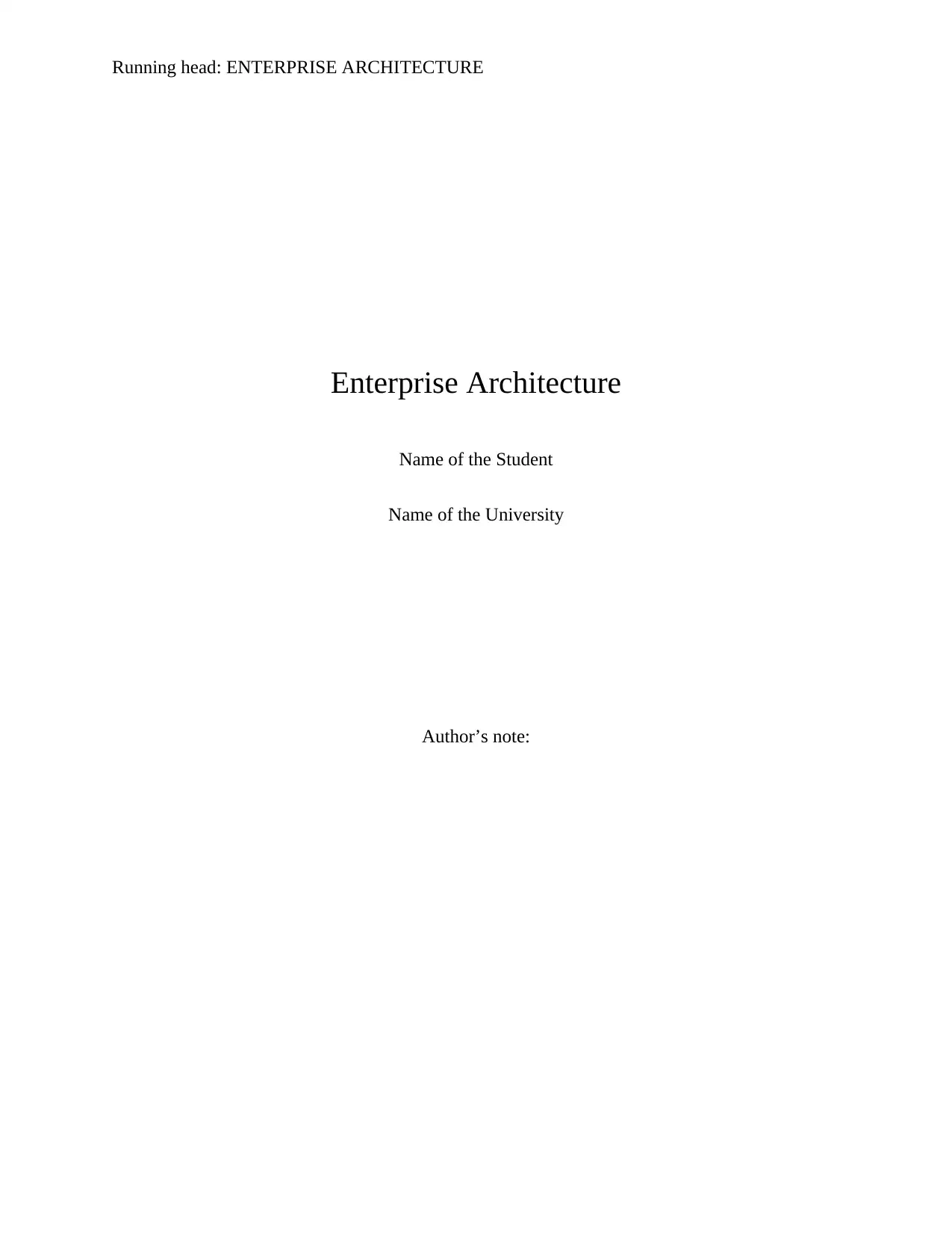
Running head: ENTERPRISE ARCHITECTURE
Enterprise Architecture
Name of the Student
Name of the University
Author’s note:
Enterprise Architecture
Name of the Student
Name of the University
Author’s note:
Paraphrase This Document
Need a fresh take? Get an instant paraphrase of this document with our AI Paraphraser
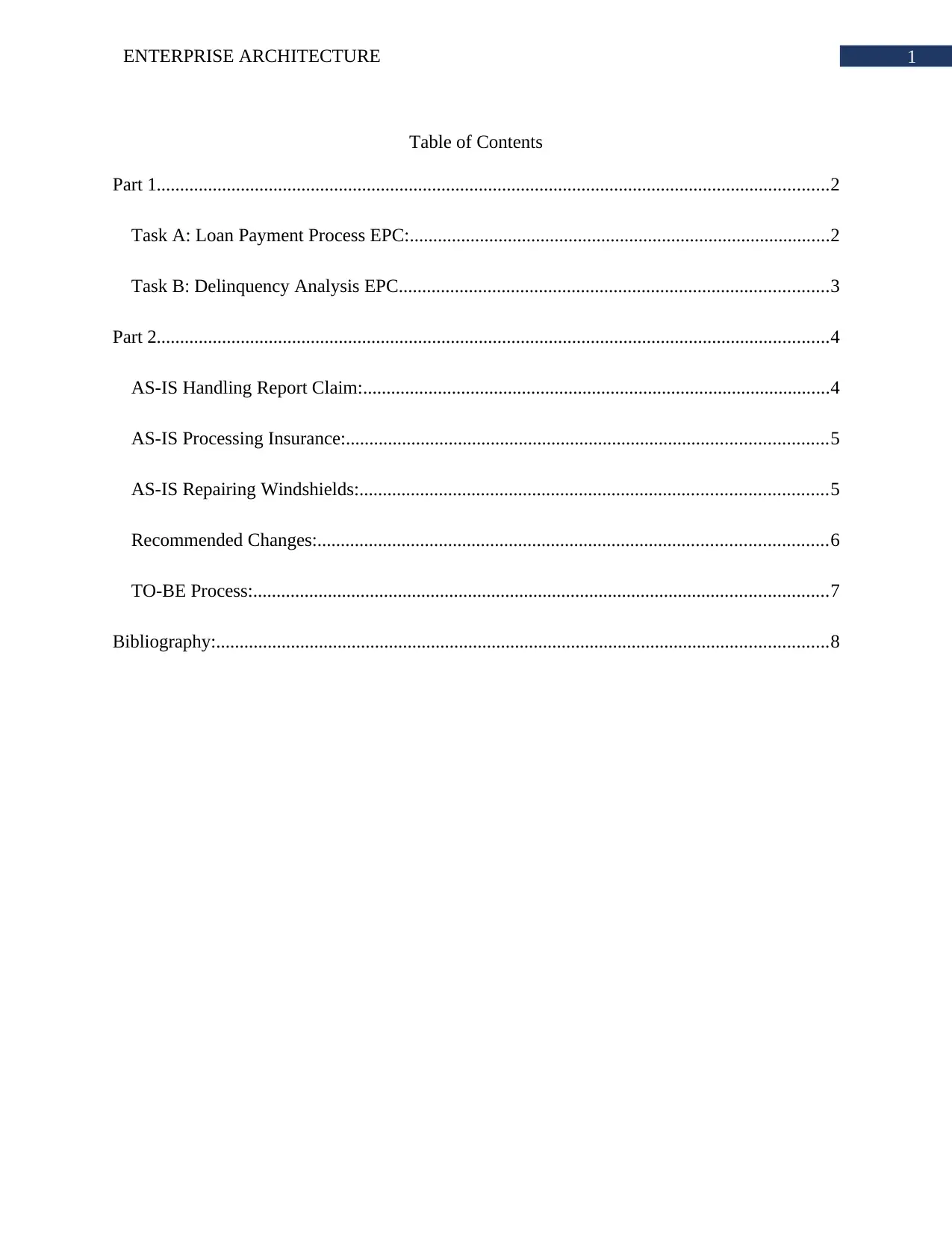
1ENTERPRISE ARCHITECTURE
Table of Contents
Part 1................................................................................................................................................2
Task A: Loan Payment Process EPC:..........................................................................................2
Task B: Delinquency Analysis EPC............................................................................................3
Part 2................................................................................................................................................4
AS-IS Handling Report Claim:....................................................................................................4
AS-IS Processing Insurance:.......................................................................................................5
AS-IS Repairing Windshields:....................................................................................................5
Recommended Changes:.............................................................................................................6
TO-BE Process:...........................................................................................................................7
Bibliography:...................................................................................................................................8
Table of Contents
Part 1................................................................................................................................................2
Task A: Loan Payment Process EPC:..........................................................................................2
Task B: Delinquency Analysis EPC............................................................................................3
Part 2................................................................................................................................................4
AS-IS Handling Report Claim:....................................................................................................4
AS-IS Processing Insurance:.......................................................................................................5
AS-IS Repairing Windshields:....................................................................................................5
Recommended Changes:.............................................................................................................6
TO-BE Process:...........................................................................................................................7
Bibliography:...................................................................................................................................8
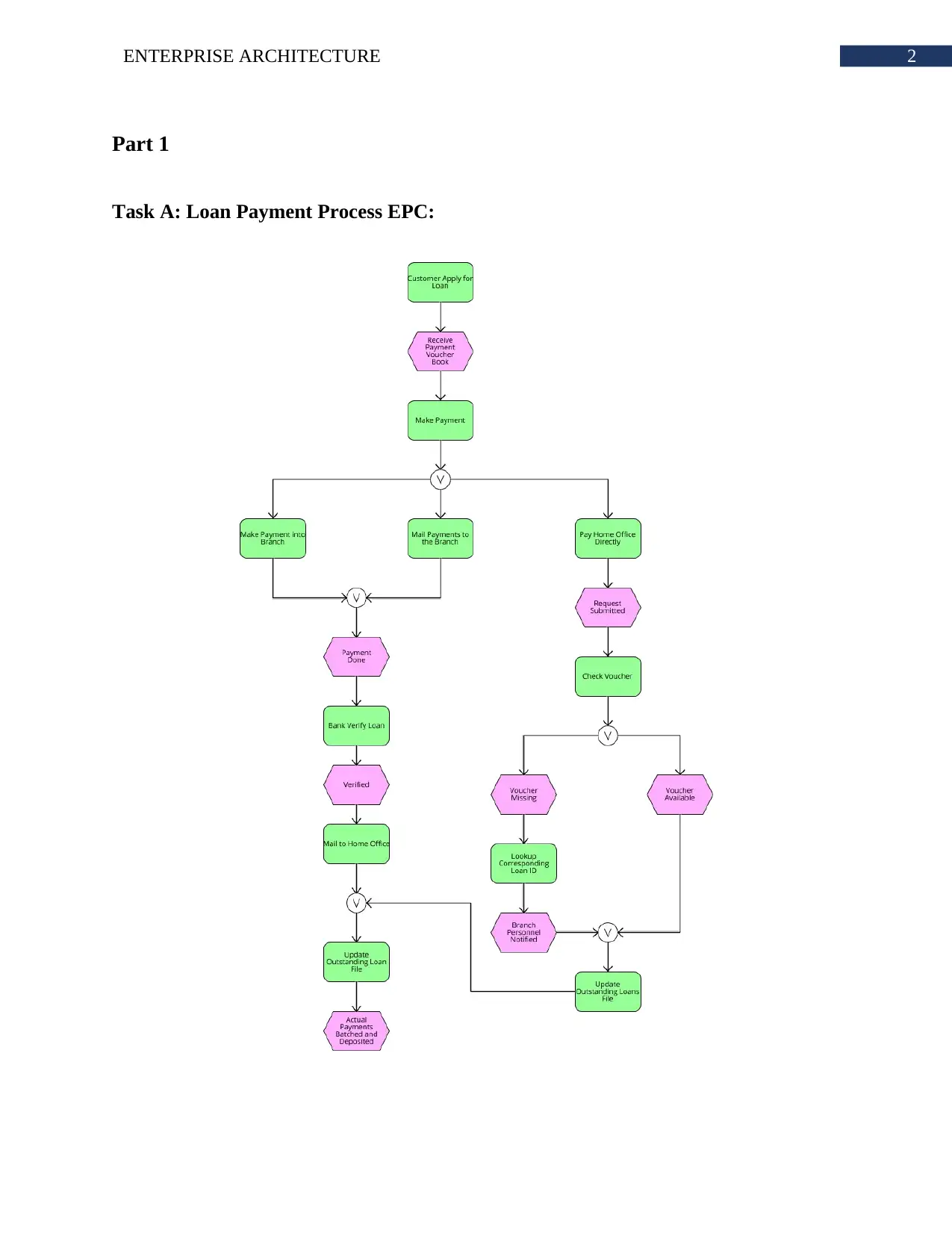
2ENTERPRISE ARCHITECTURE
Part 1
Task A: Loan Payment Process EPC:
Part 1
Task A: Loan Payment Process EPC:
⊘ This is a preview!⊘
Do you want full access?
Subscribe today to unlock all pages.

Trusted by 1+ million students worldwide
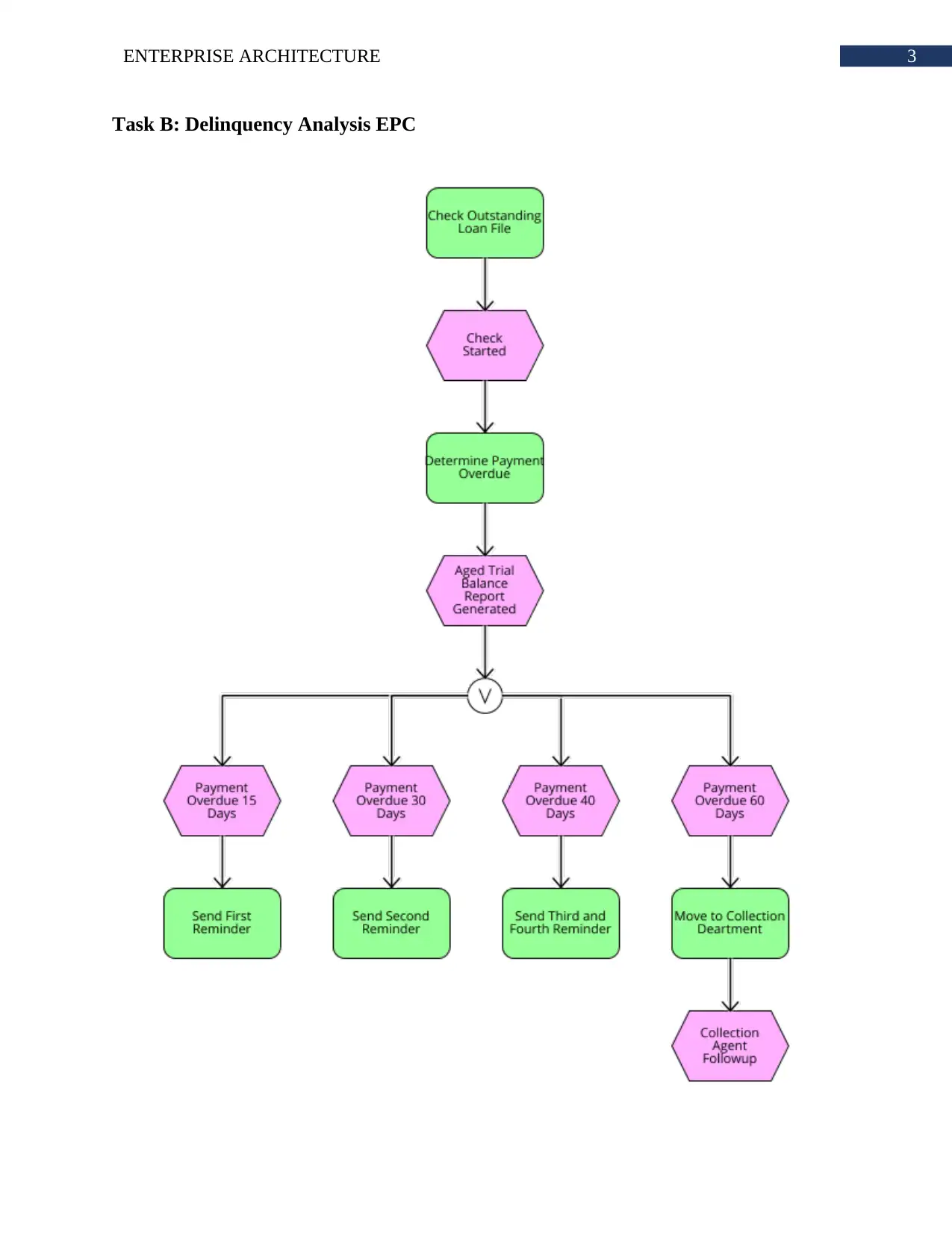
3ENTERPRISE ARCHITECTURE
Task B: Delinquency Analysis EPC
Task B: Delinquency Analysis EPC
Paraphrase This Document
Need a fresh take? Get an instant paraphrase of this document with our AI Paraphraser
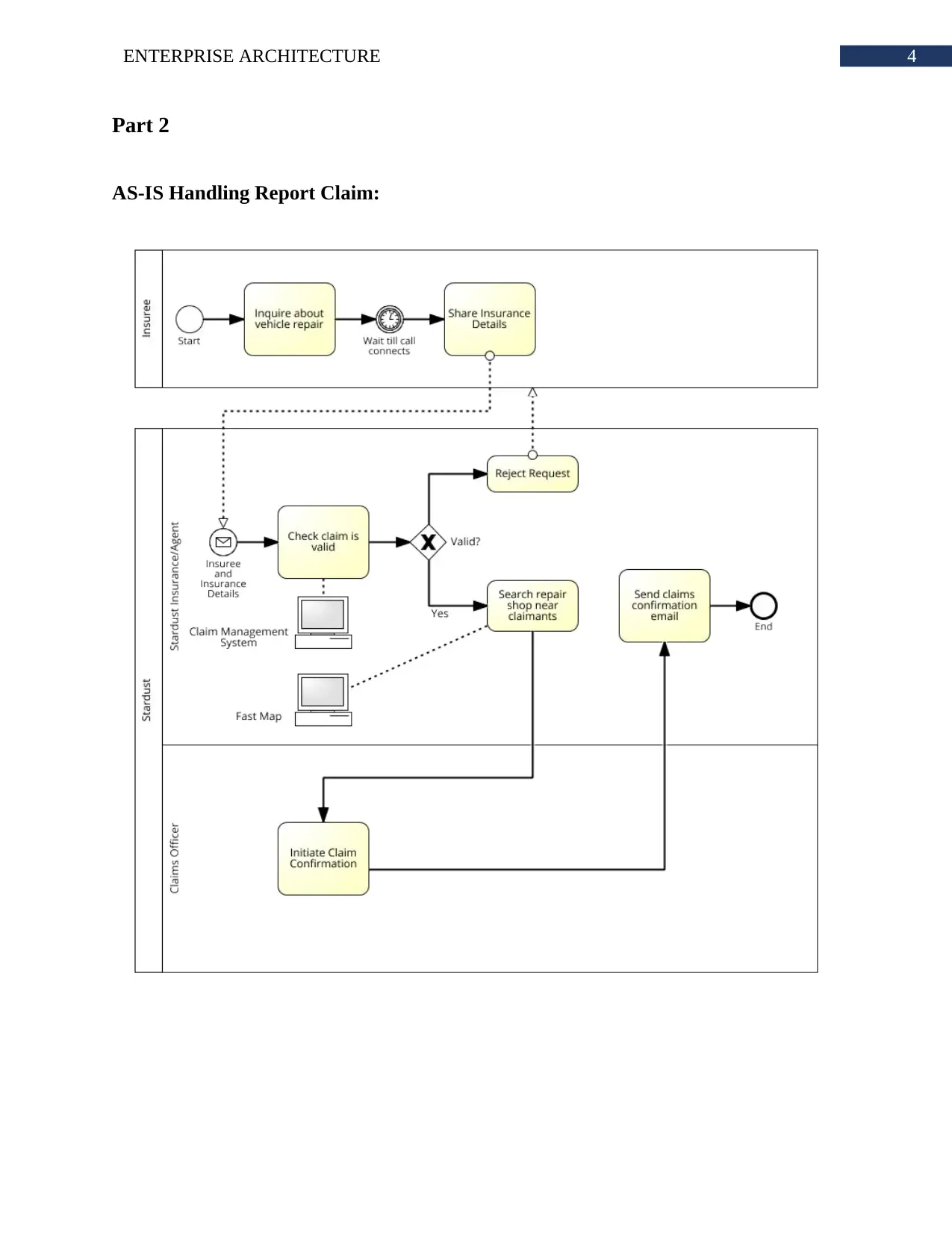
4ENTERPRISE ARCHITECTURE
Part 2
AS-IS Handling Report Claim:
Part 2
AS-IS Handling Report Claim:
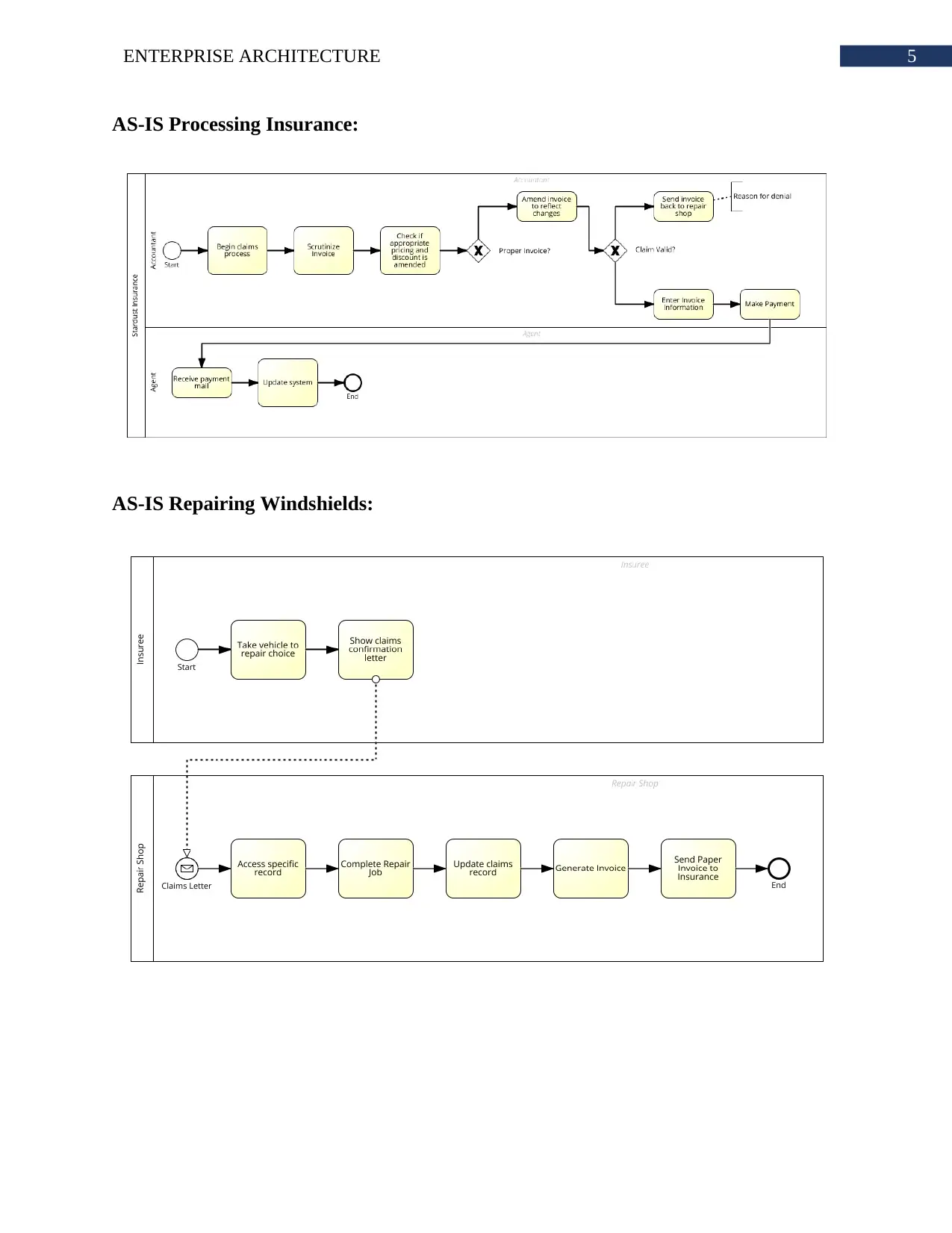
5ENTERPRISE ARCHITECTURE
AS-IS Processing Insurance:
AS-IS Repairing Windshields:
AS-IS Processing Insurance:
AS-IS Repairing Windshields:
⊘ This is a preview!⊘
Do you want full access?
Subscribe today to unlock all pages.

Trusted by 1+ million students worldwide

6ENTERPRISE ARCHITECTURE
Recommended Changes:
The proposed system is divided into three categories such as handling reporting of claim,
repairing windshields and processing insurance claim. It is recommended to implement a
centralized system that can handle all the processes and provide a single effective solution.
However, describing the issues will allow to understand the gaps in the processes. The first issue
is communication. The applicant needs to contact the insurance company or agent over the
phone. Because of this, the applicant needs to wait a lot to get connected. The second issues is
unstructured processes. The processes are all based on situations, not a single process follows
any standard procedure. The organization has very little control over the processes that are being
handled by the repair shop. The third issues is that decentralized system. The agents and repair
shop has to maintain their own system because of one single centralized system is not used in the
organization. Another big issues in the organization is the data repetition and corruption.
Because most of the tasks are handled manually, the organization may face issues like
inadequate or error data. These data are very harmful for business growth.
The solution to all these issues can be a centralized system with database. The system
will be deployed in the cloud so that it can be accessed from various locations. The system will
have a single database which can store all the claim, repair and insurance data. The applicant will
update their claim on the system and it will be instantly sent to the organization. The
organization will check the claim validity. The process is remain manual to prevent cyber-
attacks. If the claim is valid then claim id number and nearby shop details will be shared through
mail. Upon reaching a shop, the user will show the mail to shop. The shop will initiate the
process by updating on the system. In this situation, the claim will be updated and the shop id
will be saved to ensure system knows which shop is providing the service to prevent fraud in
Recommended Changes:
The proposed system is divided into three categories such as handling reporting of claim,
repairing windshields and processing insurance claim. It is recommended to implement a
centralized system that can handle all the processes and provide a single effective solution.
However, describing the issues will allow to understand the gaps in the processes. The first issue
is communication. The applicant needs to contact the insurance company or agent over the
phone. Because of this, the applicant needs to wait a lot to get connected. The second issues is
unstructured processes. The processes are all based on situations, not a single process follows
any standard procedure. The organization has very little control over the processes that are being
handled by the repair shop. The third issues is that decentralized system. The agents and repair
shop has to maintain their own system because of one single centralized system is not used in the
organization. Another big issues in the organization is the data repetition and corruption.
Because most of the tasks are handled manually, the organization may face issues like
inadequate or error data. These data are very harmful for business growth.
The solution to all these issues can be a centralized system with database. The system
will be deployed in the cloud so that it can be accessed from various locations. The system will
have a single database which can store all the claim, repair and insurance data. The applicant will
update their claim on the system and it will be instantly sent to the organization. The
organization will check the claim validity. The process is remain manual to prevent cyber-
attacks. If the claim is valid then claim id number and nearby shop details will be shared through
mail. Upon reaching a shop, the user will show the mail to shop. The shop will initiate the
process by updating on the system. In this situation, the claim will be updated and the shop id
will be saved to ensure system knows which shop is providing the service to prevent fraud in
Paraphrase This Document
Need a fresh take? Get an instant paraphrase of this document with our AI Paraphraser
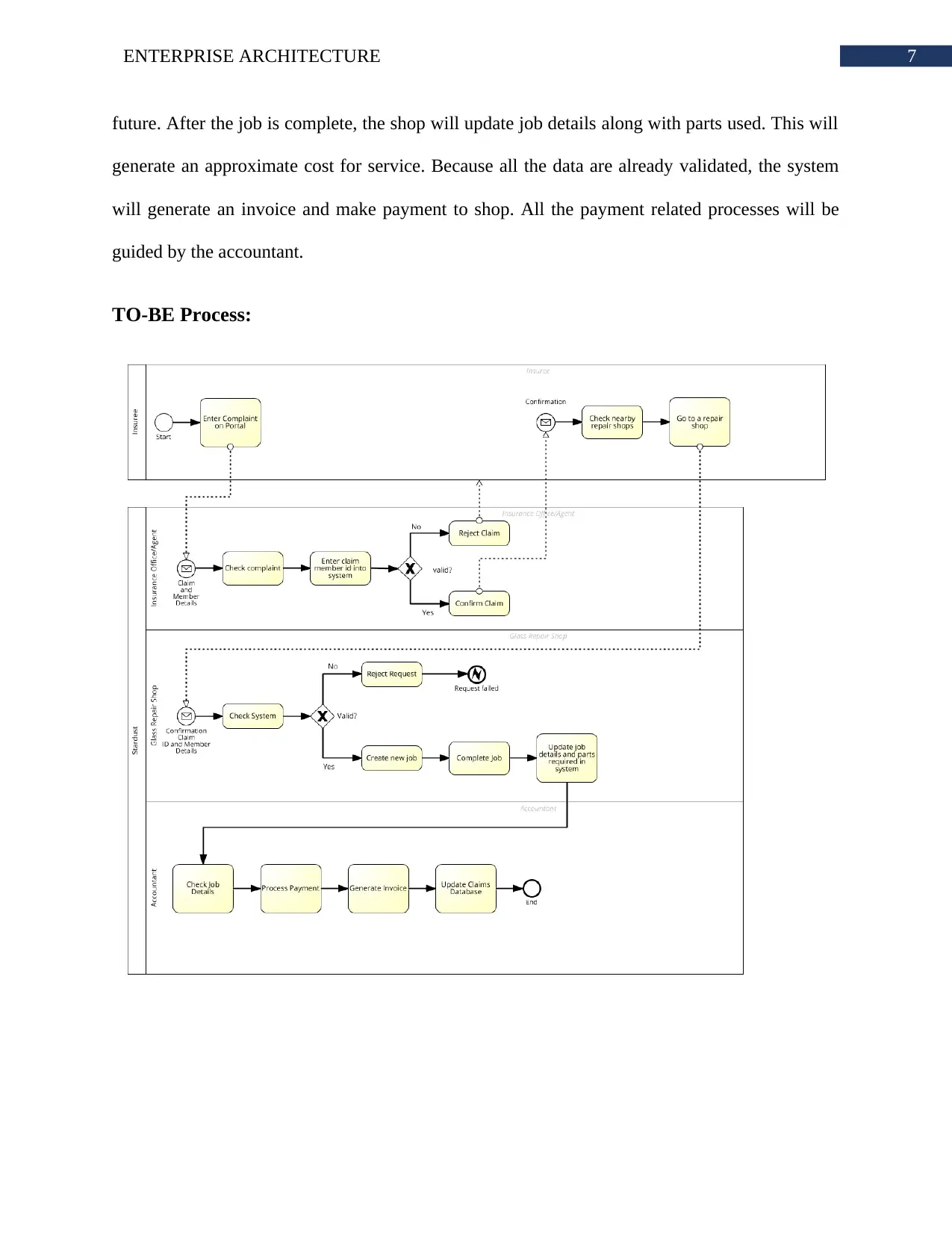
7ENTERPRISE ARCHITECTURE
future. After the job is complete, the shop will update job details along with parts used. This will
generate an approximate cost for service. Because all the data are already validated, the system
will generate an invoice and make payment to shop. All the payment related processes will be
guided by the accountant.
TO-BE Process:
future. After the job is complete, the shop will update job details along with parts used. This will
generate an approximate cost for service. Because all the data are already validated, the system
will generate an invoice and make payment to shop. All the payment related processes will be
guided by the accountant.
TO-BE Process:
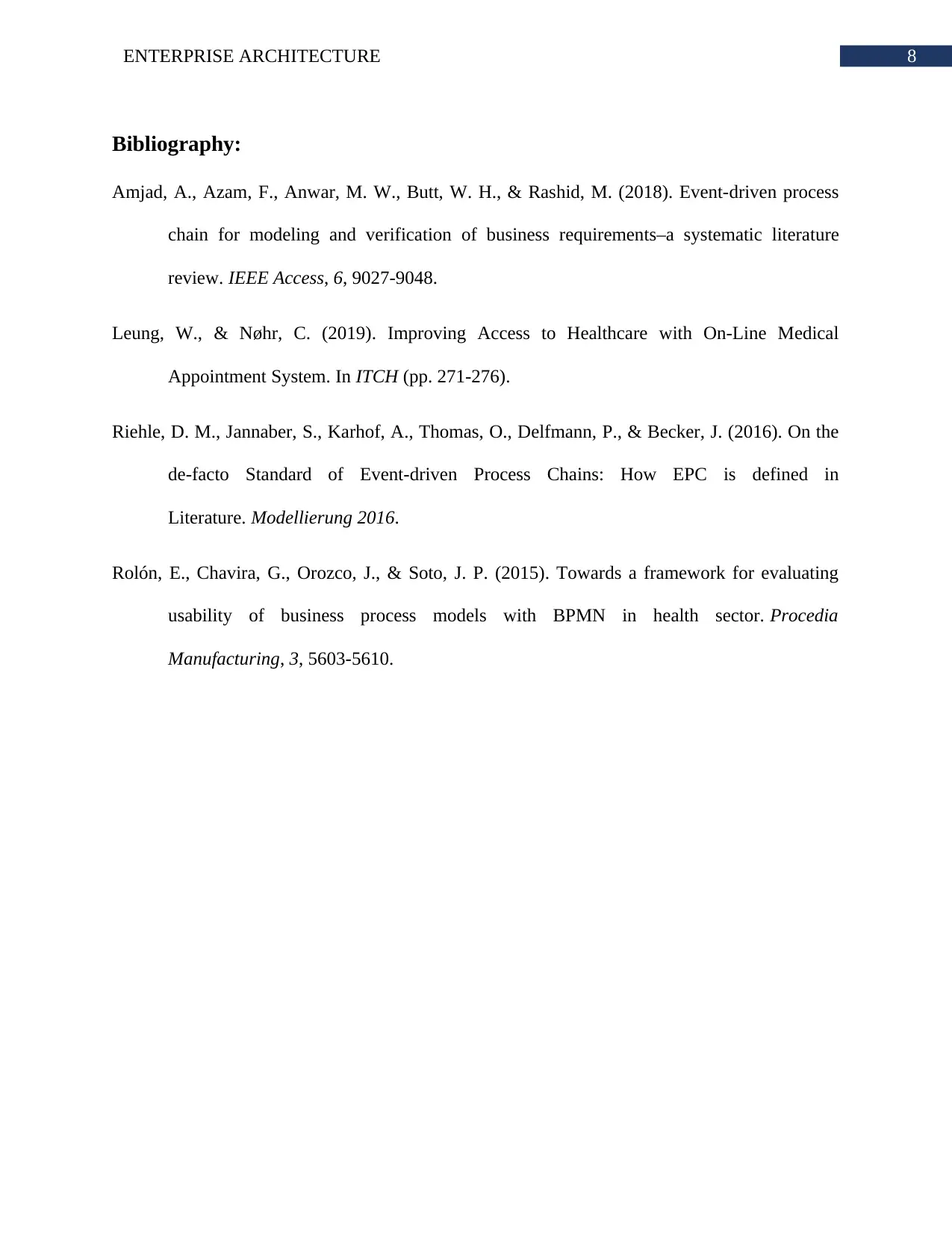
8ENTERPRISE ARCHITECTURE
Bibliography:
Amjad, A., Azam, F., Anwar, M. W., Butt, W. H., & Rashid, M. (2018). Event-driven process
chain for modeling and verification of business requirements–a systematic literature
review. IEEE Access, 6, 9027-9048.
Leung, W., & Nøhr, C. (2019). Improving Access to Healthcare with On-Line Medical
Appointment System. In ITCH (pp. 271-276).
Riehle, D. M., Jannaber, S., Karhof, A., Thomas, O., Delfmann, P., & Becker, J. (2016). On the
de-facto Standard of Event-driven Process Chains: How EPC is defined in
Literature. Modellierung 2016.
Rolón, E., Chavira, G., Orozco, J., & Soto, J. P. (2015). Towards a framework for evaluating
usability of business process models with BPMN in health sector. Procedia
Manufacturing, 3, 5603-5610.
Bibliography:
Amjad, A., Azam, F., Anwar, M. W., Butt, W. H., & Rashid, M. (2018). Event-driven process
chain for modeling and verification of business requirements–a systematic literature
review. IEEE Access, 6, 9027-9048.
Leung, W., & Nøhr, C. (2019). Improving Access to Healthcare with On-Line Medical
Appointment System. In ITCH (pp. 271-276).
Riehle, D. M., Jannaber, S., Karhof, A., Thomas, O., Delfmann, P., & Becker, J. (2016). On the
de-facto Standard of Event-driven Process Chains: How EPC is defined in
Literature. Modellierung 2016.
Rolón, E., Chavira, G., Orozco, J., & Soto, J. P. (2015). Towards a framework for evaluating
usability of business process models with BPMN in health sector. Procedia
Manufacturing, 3, 5603-5610.
⊘ This is a preview!⊘
Do you want full access?
Subscribe today to unlock all pages.

Trusted by 1+ million students worldwide
1 out of 9
Related Documents
Your All-in-One AI-Powered Toolkit for Academic Success.
+13062052269
info@desklib.com
Available 24*7 on WhatsApp / Email
![[object Object]](/_next/static/media/star-bottom.7253800d.svg)
Unlock your academic potential
Copyright © 2020–2025 A2Z Services. All Rights Reserved. Developed and managed by ZUCOL.





